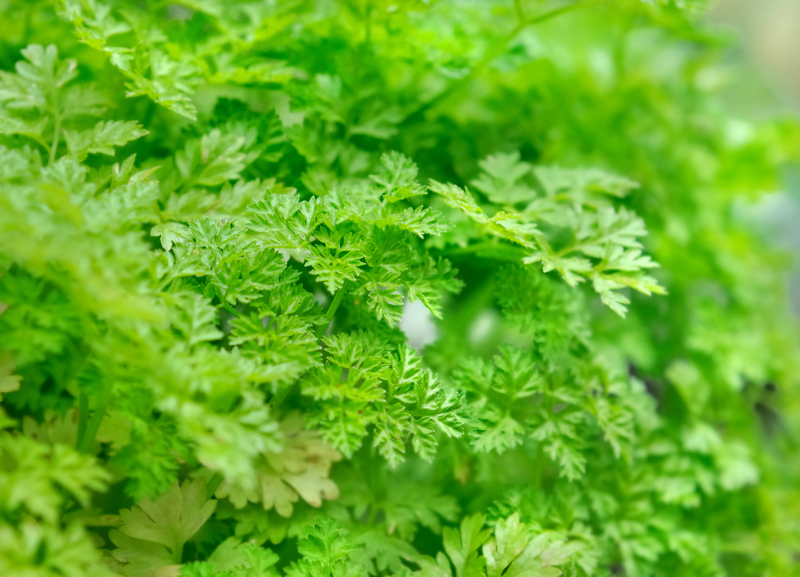Defensive Strategies for Your Garden in Winter
Posted on 29/09/2025
Defensive Strategies for Your Garden in Winter
Winter can be a challenging season for gardeners. As temperatures drop and daylight hours wane, gardens are subjected to frost, snow, ice, and chilly winds. Additionally, the dormant periods and dormant pests, as well as moisture complications, can pose significant threats to your garden's health. Implementing robust defensive strategies for your garden in winter is essential to sustain the growth and vitality of your plants, soil, and structures. In this comprehensive article, we'll explore an array of winter garden protection tips, methods to fortify your garden beds, solutions for safeguarding perennials and borders, and effective practices to ensure your garden emerges vibrant come spring.

Understanding the Threats of Winter to Your Garden
Before diving into specific winter garden defensive strategies, it's important to recognize the typical challenges gardens face throughout the cold season:
- Frost: Freezing temperatures damage plant tissues, causing dieback or death.
- Snow and Ice: Accumulation can break branches and smother beds.
- Waterlogging: Frozen ground reduces drainage, leading to root rot.
- Wind Desiccation: Drying winds draw moisture from plant tissues and soils.
- Pest Activity: Rodents, deer, and other critters feed on unprotected plants.
- Soil Erosion and Compaction: Heavy rain or snow can erode or compact bare soil.
Key Defensive Strategies for Your Garden in Winter
1. Mulching: Nature's Insulation Blanket
Mulching is among the most effective winter garden protection strategies. It acts as an insulating layer, helping to:
- Moderate soil temperature fluctuations
- Retain soil moisture
- Minimize soil compaction and erosion
- Suppress winter weeds
2. Physical Barriers: Windbreaks and Covers
Winter winds can be harsh, especially in exposed gardens. Using physical barriers helps reduce wind damage and drying effects:
- Windbreaks: Erect temporary structures made from burlap, fabric, or snow fencing around sensitive shrubs and evergreens to block prevailing winds.
- Row Covers: Lightweight horticultural fleece or plastic tunnels over beds offer additional shelter for tender vegetables and young perennials.
- Cloche/Cold Frames: Install cloches or cold frames over winter crops to shield them from frost and maintain a warmer microclimate.
3. Strategic Plant Selection and Placement
Another critical aspect of gardening protection in winter is thoughtful plant selection. Spot cold-tender and hardy species' locations carefully:
- Position hardy perennials and shrubs where they offer shelter to less resilient varieties.
- Use raised beds for tender plants to facilitate drainage and elevate roots above the coldest layers of soil.
- Cluster potted plants together against a sheltered wall and wrap pots in burlap or bubble wrap to prevent root freezing.
4. Pruning and Plant Maintenance
Properly preparing and maintaining your plants before and during winter ensures they are robust enough to weather the cold. For safe winter garden defense:
- Prune out diseased, dead, or damaged branches in late fall -- avoid heavy pruning, as it can stimulate new growth susceptible to frost.
- Tie up tall or floppy perennials and grasses to prevent snow and ice damage.
- Clean up fallen leaves and plant debris to prevent pest and fungal outbreaks over winter.
5. Watering and Drainage Solutions
Although plants require less water in winter, adequate hydration before freezing temperatures arrive is vital. Defensive winter garden watering tips include:
- Deeply water evergreens and new plantings in autumn before the ground freezes.
- Ensure gutters, drains, and downspouts are clear to prevent waterlogging near roots.
- Amend compacted or clay soils with organic matter to promote winter drainage.
6. Pest and Animal Deterrence
Many pests and animals become more active in winter as they seek food and shelter. Protect your garden by:
- Wrapping tree trunks with wire mesh or plastic guards to prevent gnawing by rodents.
- Using commercial or homemade repellents around vulnerable plants for protection from deer and rabbits.
- Clearing dense brush piles where small animals may nest.
7. Protecting Garden Structures and Tools
Your garden is more than plants: cold weather also takes a toll on raised beds, trellises, and tools. Ensure longevity and readiness for spring by:
- Cleaning and storing garden tools in a dry shed or garage.
- Repairing or reinforcing raised beds and fences before winter storms arrive.
- Applying protective oils or stains to wooden structures to repel moisture.
Special Considerations for Key Garden Areas
Perennial Borders
Perennials often survive winter best when left with some foliage for insulation. Cut back only disease-prone plant material, then cover borders with mulch or evergreen boughs to shield crowns from freeze-thaw cycles. Mark valuable or rare perennials with stakes to prevent accidental damage during snow removal or spring cleanup.
Vegetable Beds
After harvest, winterize vegetable plots by removing dead crops, adding compost, and covering soil with a thick mulch or a cover crop (like rye or winter peas) to prevent erosion and replenish nutrients. For year-round crops like kale or leeks, row covers and low tunnels provide an extra layer of defense.
Fruit Trees and Shrubs
Fruit trees and berries benefit from extra attention:
- Paint young tree trunks with a 50:50 mix of white latex paint and water to reflect sun and prevent frost cracking.
- Apply a thick layer of mulch around root zones, but keep clear of trunks.
- Try to net branches or use wildlife deterrents to protect buds and bark from winter foraging animals.
Organic and Sustainable Winter Garden Defenses
Eco-friendly approaches to winter garden protection benefit your micro-ecosystem and the planet:
- Avoid synthetic chemicals for pest and disease control, as many beneficial insects hibernate in garden debris.
- Use compostable mulches and natural fibers for covers and windbreaks.
- Introduce leaf litter, log piles, and bug hotels as winter shelters for pollinators and beneficial insects.
- Practice crop rotation and companion planting in fall to reduce disease risk in subsequent seasons.
Common Mistakes to Avoid During Winter Garden Defense
- Applying mulch too early and trapping heat-loving pests or encouraging rot.
- Neglecting to check structures after heavy snow (remove bulk snow gently to prevent breakage).
- Using heavy plastic that doesn't allow plant respiration.
- Forgetting to water during dry winter spells, especially for evergreens.
- Over-pruning or fertilizing late in the season, causing tender new growth susceptible to cold.

Preparing for Spring: What to Do Near Winter's End
As winter gives way to early thaws, begin preparing your garden for the return of growth:
- Gradually remove heavy mulches and covers to allow soil to warm and dry.
- Inspect plants for winter damage and prune dead material.
- Add a fresh layer of compost to beds in early spring for a nutrient boost.
- Sharpen tools and repair garden structures for the upcoming busy season.
Conclusion: Prioritize Defensive Strategies for a Healthy Winter Garden
Winter doesn't mean the end of gardening; it's an essential phase for preservation and preparation. By implementing comprehensive defensive strategies for your garden in winter--from mulching and windbreaks, to wildlife deterrents and sustainable practices--you ensure that your cherished plants, soil, and structures not only survive but thrive. Invest time in winter defense, and you'll reap the rewards when longer days and warmer temperatures return. Practice vigilance, adapt to conditions in your specific region, and enjoy a healthy, flourishing garden all year round.

